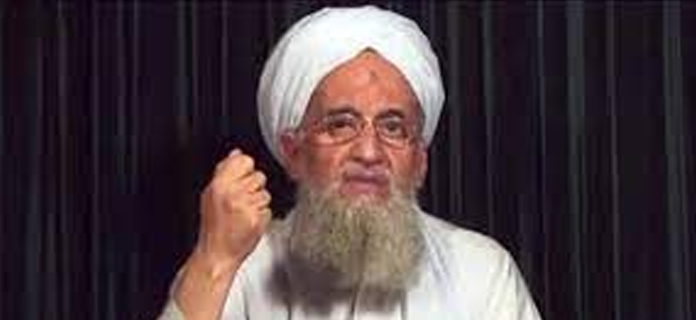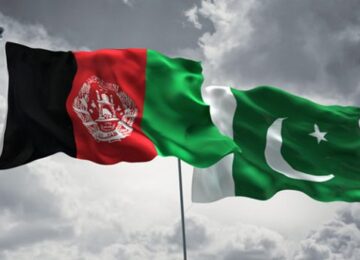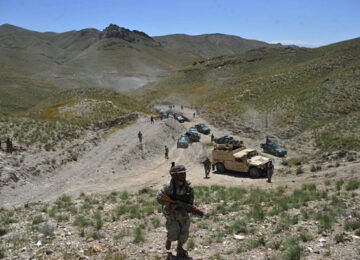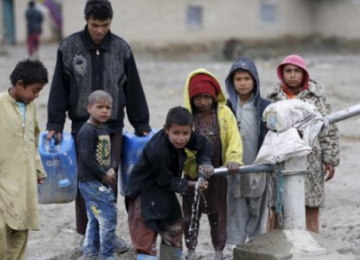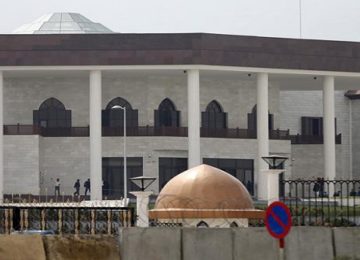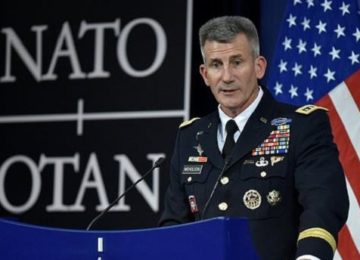Ayman Al Zawahiri and his reign of terror that set the world on fire
On August 1st 2022, the Afghan press reproduced a Twitter message of the former director the Afghan security Rahmatullah Nabil, claiming that he had spotted the American drones in Kabul’s airspace that had attacked various locations in Kabul.
The Taliban spokesman for the Kabul Police Khalid Zardan, quickly issued a press release confirming that a rocket [not a drone attack] had struck a vacant house on July 31, that caused no injury. The subject was closed. No panic, no fury, and no condemnation of USA for violation of Afghan’s sovereignty. Probably, the Taliban were either not fully aware of what had already happened or they were simply awestruck at the incident and were now looking for a face-saving strategy that could be suitable for both – internal and external consumption.
The next day, the world press was flashing a lead report claiming that the Al-Qaeda Chief, Ayman al-Zawahiri, had been eliminated in Kabul by US drone attacks. The US blamed the Taliban for ‘grossly’ violating the Doha agreement by sheltering al Qaeda’s Zawahiri; the Afghan Deputy Prime Minister Abdul Salam Hanafi, called the attacks a violation of both national sovereignty and the Doha Agreement, but refrained from admitting the identity of the victim.
After staying silent for a couple of days, the Taliban came out with an official statement denying the death of Al-Qaeda chief on Afghanistan’s soil and even refused to admit if he had ever arrived and stayed in Afghanistan. But then who had been the target of US drone attacks? Instead of answering this Hanafi opted for the rhetoric of the government’s resolve that is based on no use of Afghan soil against others.
This wasn’t the first time that the Afghan Taliban were blamed of providing shelters to terrorist groups. A day before the American drone attack, Russia’s special envoy for Afghanistan Zamir Kabulov, said at a press briefing that since the Islamic Emirate came to power, the number of ISIS (Daesh) militants has increased from 2000 to 6000 now.
Pakistan is another country that has been constantly experiencing cross-border attacks carried out by the militants of the Tehreek-e-Taliban Pakistan (TTP) who are enjoying official protection from Afghan Taliban. Soon after the ascendance of Afghan Taliban into power, they had released 2,300 TTP commanders and militants that had been jailed by the US. This gesture of the Afghan Taliban had quickly raised the TTP’s strength to more than 7000 strong men who have, since then, been residing under the shelter of the Afghan Taliban and directing their sleeping cells in the country to let loose their terror attacks in Pakistan.
Despite organizing peace talks between TTP and Pakistan on their own soil, the Afghan Taliban have the guts to claim that they stand firm on disallowing the use of Afghan soil against others.
For the Afghan Taliban terrorism seems to have a different meaning than the rest of the world. This is why all these militant organizations and the terrorist most wanted by the US, Ayman al-Zawahiri, was the reported to have had full freedom to live in an area of Kabul where former Afghan general and ethnic Uzbek strongman Abdul Rashid Dostum had also lived, among other local dignitaries.
THE ISLAMIC JIHAD AND AL-QAEDA HAD BEEN INVOLVED IN A NUMBER OF TERROR ATTACKS IN DIFFERENT PARTS OF THE WORLD LONG BEFORE THE 9/11 INCIDENT. POST 9/11, THEY EXPANDED THEIR OPERATION FURTHER AND PAKISTAN ALSO BECAME A TARGET.
So who was Ayman al-Zawahiri? An obituary in the Telegraph reports that Ayman al-Zawahiri was born in Giza, Egypt in an upper-middle-class family. His grandfather was the Grand Imam at Al-Azhar University in Cairo, his great-uncle was first secretary general of the Arab League, while his father was a professor of pharmacology and mother had a background of a wealthy political family. From an early age, Ayman was under the influence of his maternal uncle Mahfouz Azzam, who was a follower of the radical Islamist thinker Sayyid Qutb – the founder of radical religious party the Muslim Brotherhood and who preached “Jihad for abolishing the authorities of the Jahili [ungodly] system”.
Born and brought up in a religious environment, Zawahiri found the Muslim Brotherhood a suitable platform to his mindset and he joined it in 1965. He went into jail at the age of 14 when Sayyid Qutb was arrested and later executed on conspiracy charges. Zawahiri, along with four other fellow students, continued working as an underground cell that was later merged with others to form Egyptian Islamic Jihad (also known as Islamic Jihad).
To pursue the cause he considered the most sacred one, he established a close relationship with Osama bin Laden and both of them worked on different ‘jihadi missions’ in different parts of the world especially in Africa and Asia. The Afghan Jihad raised an opportunity for Zawahiri to visit Pakistan as early as 1980 to provide medical help to Afghan refugees. As reported in The Telegraph, he was found involved in the following high profile terror attacks around the world:
1970 Zawahiri formed Islamic Jihad party.
1981 Zawahiri was arrested as a suspect involved in assassination of Egyptian president Anwar Sadat.
1988 Zawahiri and Osama bin Laden established al-Qaeda in Khost, Afghanistan and had various Jihadist groups join it.
1995 Suspected of financing the suicide bombing of the Egyptian embassy in Islamabad. Also, involved in an assassination attempt on Egyptian president Hosni Mubarak in Addis Ababa.
1997 US named Zawahiri as a leader of the Vanguards of Conquest group – a faction of Islamic Jihad behind the massacre of 70 foreign tourists in Luxor, Egypt.
1998 Suspected of involvement in bombings of US embassy in Tanzania and Nairobi killing 200 people.
Zawahiri and Osama bin Laden issued a joint “fatwa” ordering Muslims to kill US civilians anywhere in the world.
1999 Death sentence in absentia by an Egyptian court for activities linked to Islamic Jihad.
2006 Took over operational command of al-Qaeda, reformed the group and the same year Afghanistan saw 139 suicide bombings compared with 27 in 2005. During the same year, seven bomb attacks in London in July. He was the mastermind behind those attacks.
2011 Zawahiri became the leader of al-Qaeda after OBL was killed by US troops on May 2, 2011.
The Islamic Jihad and al-Qaeda had been involved in a number of terror attacks in different parts of the world long before the 9/11 incident. Post 9/11, they expanded their operation further and Pakistan also became a target. During 2013 to 2020, more than 170 militants affiliated with AQ were arrested in Pakistan. One of them, Saifullah, claimed to be a close associate of Ayman al-Zawahiri, was arrested from Multan on 8 November 2013.
From 2014 to 2020, nearly 80 militants belonging to al-Qaeda were killed in Pakistan during security operations and more than 22 were killed in seven drone attacks by the US. From 2014-15, al-Qaeda in Indian Society (AQIS) claimed responsibility for the terror attacks in Pakistan that left 76 civilians and security personnel dead. The most dreaded attack was at Wagah border on November 2nd 2014 that had killed 57 people and injured 120. An affiliate of al-Qaeda known as Jundullah was one of the claimants of this attack.
Zawahiri and OBL may have had their own justifications for what they had been doing, but the newly formed Taliban’s government was expected to have evolved from their past. The way they have been governing the country after their resurrection in Afghanistan keeps reminding the world that they are back on the same track they were on two decades ago.
This raises a question: For how long, will the Taliban be able to continue ruling the country with an approach that doesn’t fit well with the rest of the world especially in a situation where the natural disasters, food and economic crisis are looming large and making them more dependent on support from the world community?
Courtesy: Friday Times
By Mohammad Nafees



